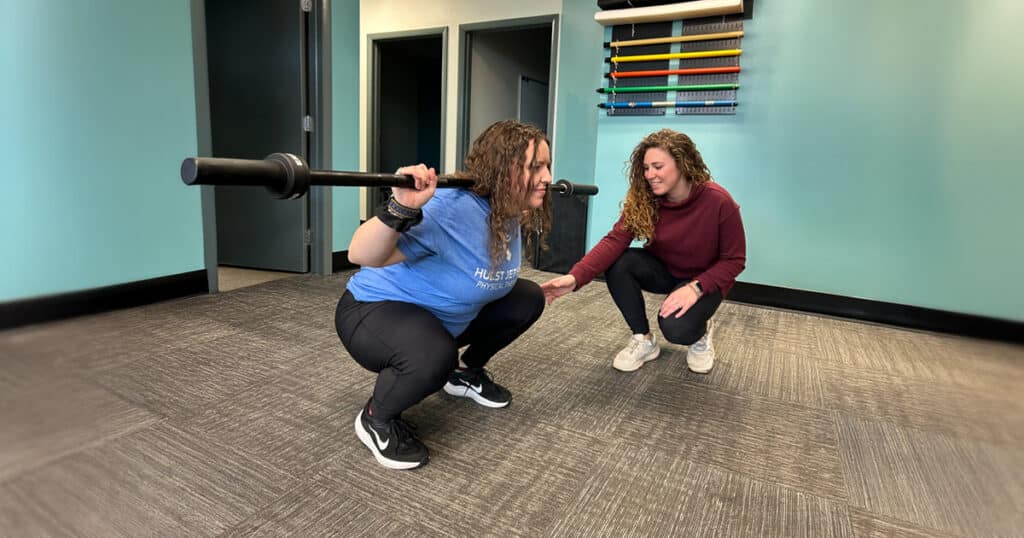The Effects of Exercise on Mental Health

Exercise and physical activity are important for nearly all aspects of life, including not only physical but also mental health. Exercise can help moderate stress levels within the body, improve cognitive function, increase muscle mass, regulate inflammation, reduce body fat, and improve self-image1. Additionally, research has increasingly demonstrated support for exercise and its positive effects on anxiety and depression across the lifespan. 2
Anxiety and Depression
Depression is one of the leading causes of disability and affects nearly 300 million people globally.2 Depression has many complicated factors, but there has been a strong association between high levels of inflammation in the body and mental health. This is why exercise has become of growing interest for the treatment of mental health. Exercise has been shown over multiple studies to have a positive effect on reducing inflammatory markers in the body, resulting in the improvement of anxiety and depression symptoms.3,4
Aerobic Training
Aerobic training, such as running, swimming, and cycling, has been previously most recommended for the treatment of mental health disorders due to its benefits on hormone levels, inflammation, and sleep. 5,6 Likewise, resistance training has been growing in popularity as a mechanism for addressing anxiety and depression. Multiple studies have shown that participants in strength training programs had a reduction in symptom severity, improved body confidence, increased metabolism, and better hormone regulation. In young adults, resistance training has been shown to be more effective than aerobic exercise in treating depression and anxiety.7
Aerobic Training + Resistance Training
While these forms of exercise are beneficial independently, research most supports performing aerobic and resistance training in combination to have the greatest effects on mental health. In fact, 22 studies and 1,831 participants demonstrated that performing aerobic activity and resistance training at a moderate (3-4x/wk) to high (>5x/wk) frequency consistently resulted in improvement in anxiety and depression. No significant improvements were found in groups that only participated in these activities 1-2x/wk.2 Additionally, positive results were found when participants stayed in their exercise routines for at least 9 weeks, with even greater results seen with consistent participation over 24 weeks. 2 This indicates that while exercise may not be a quick fix in the treatment of depression, it creates a true lifestyle change and promotes healthy habits throughout the lifespan.
How to Get Started
After reading this, a normal follow-up question to these findings would be, what kind and how much exercise? For resistance training, a majority of the research shows that performing 8-12 reps at moderate-high (think 6-7/10 difficulty) levels, for greater than 60 minutes at a time, resulted in the largest effect on mental health measures. 7 Positive results in mental health were seen with all kinds of resistance training, including free weights, machines, and bodyweight exercises, which allow for flexibility in workouts and greater accessibility.
For aerobic training, 30-35 min, 3-5x/wk resulted in the best improvements in mental health. Moderate levels of exercise intensity, such as a brisk walk or cycling, showed the most significant reduction in anxiety and depression.8
Common Barriers
While this all sounds great, I understand that there are barriers that can result in your ability to exercise. Injuries, accessibility, time, and lack of experience are all factors that may impact your ability to consistently participate in exercise. To mitigate these factors, consider exercising in a group or with a friend. Also, many insurances offer discounts on gym memberships, or there are options for low-cost gyms in your community. Exercise does not have to be glamorous and can even include going for a long walk or following a YouTube fitness routine at home. Even simply performing some exercises while you’re watching your favorite TV show is a great way to fit in a quick workout. The best way to stay consistent is to make exercise a part of your daily routine, just like you do for eating a meal or brushing your teeth. Remember, you make time for the things that matter.
What If I Can’t Exercise Due to Injury?
If you are hindered by an injury that does not allow you to exercise, reach out to a physical therapist. We are trained in techniques to relieve pain and exercise modifications that allow you to exercise in a safe and enjoyable way. This is a great way to get your fitness routine back on track.
Based on the research, combining aerobic and resistance training demonstrates the best results in reducing anxiety and depression. Yet, any form of exercise versus sedentary behavior is going to have a positive effect on your mental health. The most important recommendation I can give is not to give up. Nine weeks is a long time to see the changes you’re hoping for. Find a routine and stick with it because the long-term benefits will far exceed any short-term solutions.
If you think you would be a candidate for physical therapy, find your closest Hulst Jepsen Physical Therapy location or call 616.256.8679 to schedule an appointment.
References
1. Moussavi S, Chatterji S, Verdes E, Tandon A, Patel V, Ustun B. Depression, chronic diseases, and decrements in health: results from the World Health Surveys. Lancet. 2007;370(9590):851–8. https://doi.org/10.1016/S0140- 6736(07)61415-9.
2. Wang et al. BMC Sports Science, Medicine and Rehabilitation (2025) 17:10 https://doi.org/10.1186/s13102-025-01058-w
3. You Y. Accelerometer-measured physical activity and sedentary behaviour are associated with C-reactive protein in US adults who get insuffcient sleep: a threshold and isotemporal substitution efect analysis. J Sports Sci. 2024;42(6):527–36. https://doi.org/10.1080/02640414.2024. 2348906. 7. You Y, Ablitip A, Chen Y, Ding H, Chen K, Cui Y, Ma X. (2024). Saturation efects of the relationship between physical exercise and systemic immune infammation index in the short-sleep population: A crosssectional study. BMC Public Health, 24(1), 1920. https://doi.org/10.1186/ s12889-024-19432-7.
4. Gordon BR, McDowell CP, Hallgren M, Meyer JD, Lyons M, Herring MP. Association of Efcacy of Resistance Exercise Training with depressive symptoms: Meta-analysis and Meta-regression analysis of Randomized clinical trials. JAMA Psychiatry. 2018;75(6):566. https://doi.org/10.1001/jamapsychiatry.2018.0572. Wang et al. BMC Sports Science, Medicine and Rehabilitation (2025) 17:10 Page 20 of 21 14. O’Connor PJ, Herring MP, Caravalho A. Mental Health Benefts of Strength Training in adults. Am J Lifesty
5. Rebar AL, Stanton R, Geard D, Short C, Duncan MJ, Vandelanotte C. A meta-meta-analysis of the efect of physical activity on depression and anxiety in non-clinical adult populations. Health Psychol Rev. 2015;9(3):366–78. https://doi.org/10.1080/17437199.2015.1022901.
6. Biddle SJH, Ciaccioni S, Thomas G, Vergeer I. Physical activity and mental health in children and adolescents: an updated review of reviews and an analysis of causality. Psychol Sport Exerc. 2019;42:146–55. https://doi.org/ 10.1016/j.psychsport.2018.08.011
7. Marinelli, R., Parker, A. G., Levinger, I., Bourke, M., Patten, R., & Woessner, M. N. (2024). Resistance training and combined resistance and aerobic training as a treatment of depression and anxiety symptoms in young people: A systematic review and meta-analysis. Early Intervention in Psychiatry, 18(8), 5–85–598. https://doi.org/10. 1111/eip.13528 8. Gilani SRM, Feizabad AK. The effects of aerobic exercise training on mental health and self-
